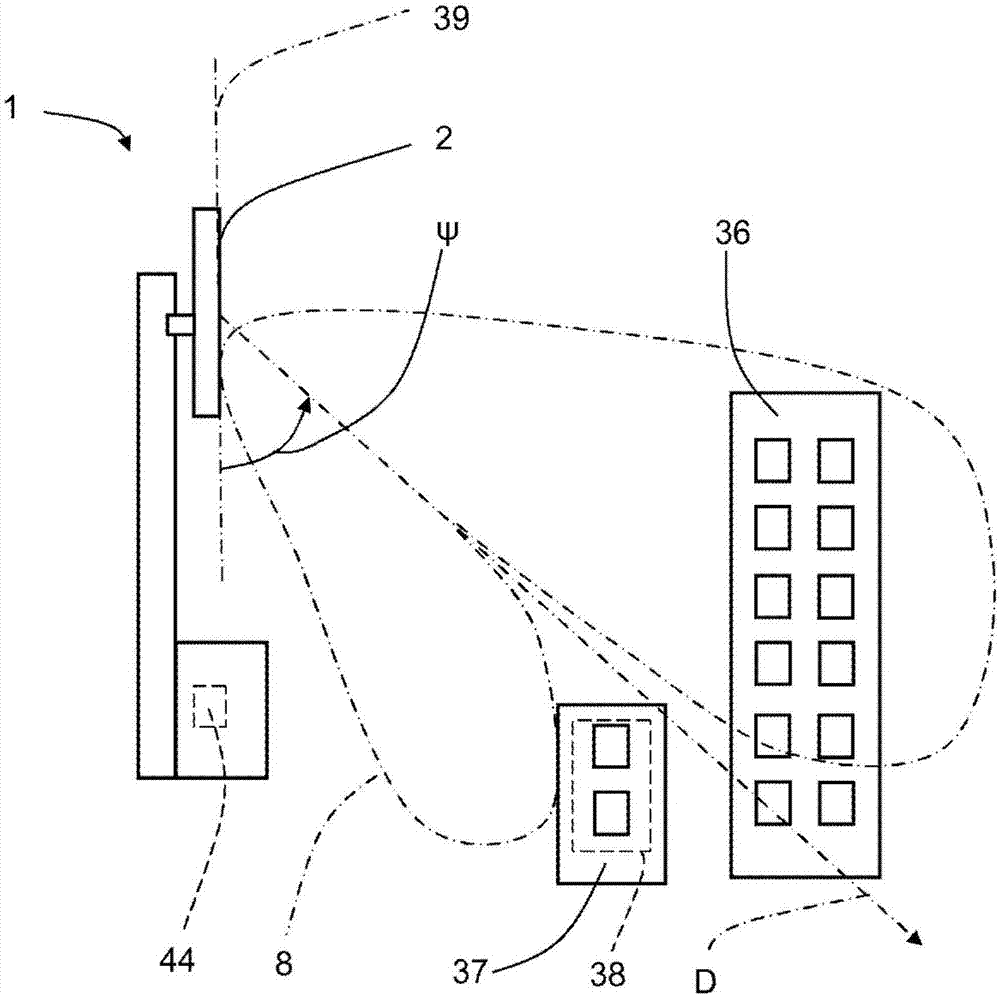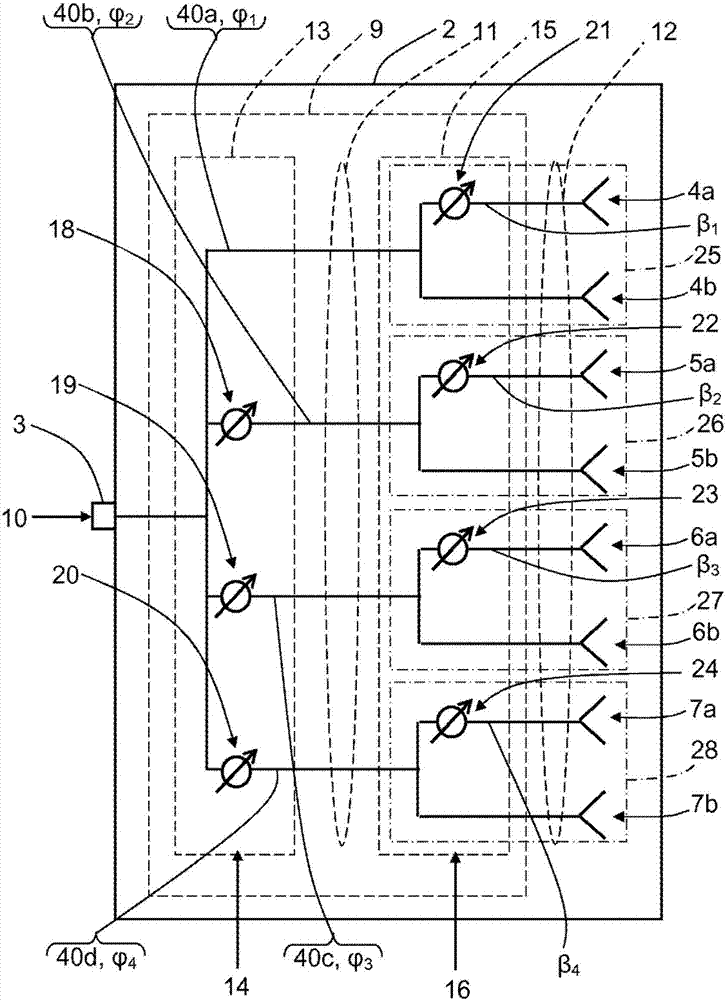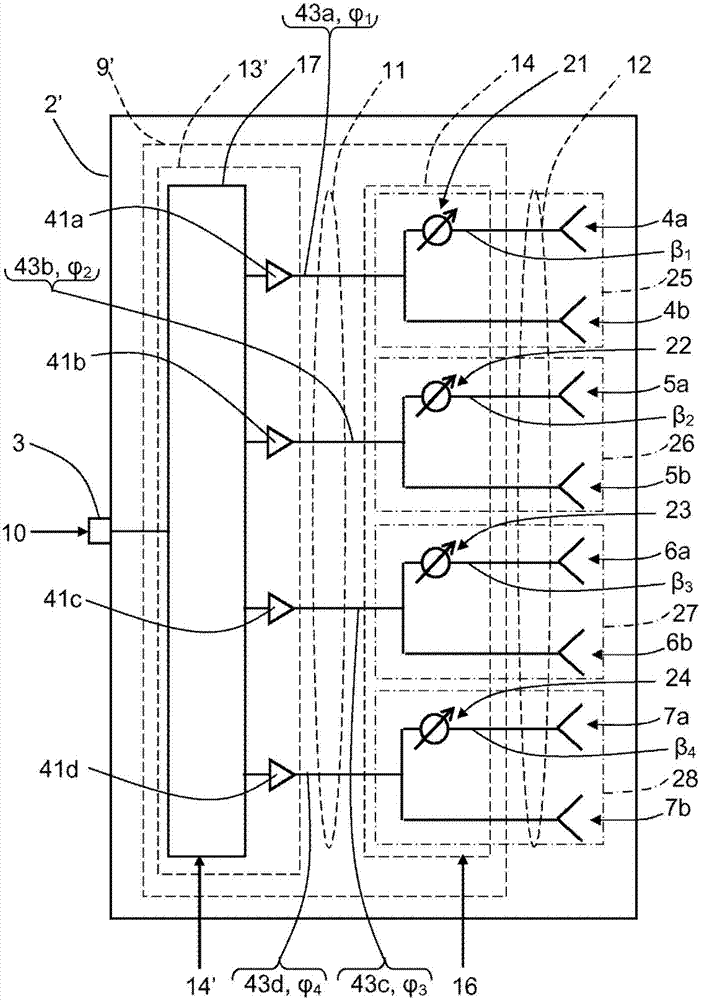Reduced gain of an antenna beam pattern
An antenna beam and pattern technology, applied in the direction of antennas, electrical components, etc., can solve the problems of slow adaptability, temporary poor, network performance degradation, etc.
- Summary
- Abstract
- Description
- Claims
- Application Information
AI Technical Summary
Problems solved by technology
Method used
Image
Examples
Embodiment Construction
[0026] refer to figure 1 , there is a wireless communication node 1 comprising an antenna arrangement 2 which in this example is part of a Reconfigurable Antenna System (RAS) in a Self Organizing Network (SON). also refer to figure 2 , showing a first example, the antenna device 2 comprises an antenna port 3; eight antenna elements 4a, 4b, 5a, 5b, 6a, 6b, 7a, 7b arranged to provide an antenna beam pattern 8; Port 3 receives at least one phase control device 9 of an input signal 10 . The antenna arrangement 2 comprises four sub-arrays 25, 26, 27, 28, wherein each sub-array 25, 26, 27, 28 comprises two antenna elements 4a, 4b; 5a, 5b; 6a, 6b; 7a, 7b.
[0027] In order to tune the RAS settings, the phase control means 9 is arranged to determine the four corresponding phase shifts by the input signal 10 The first set of phase shifts is formed to determine the four intermediate signal components 11 from the input signal 10 . To this end, the phase control device 9 includes: a...
PUM
 Login to View More
Login to View More Abstract
Description
Claims
Application Information
 Login to View More
Login to View More - R&D
- Intellectual Property
- Life Sciences
- Materials
- Tech Scout
- Unparalleled Data Quality
- Higher Quality Content
- 60% Fewer Hallucinations
Browse by: Latest US Patents, China's latest patents, Technical Efficacy Thesaurus, Application Domain, Technology Topic, Popular Technical Reports.
© 2025 PatSnap. All rights reserved.Legal|Privacy policy|Modern Slavery Act Transparency Statement|Sitemap|About US| Contact US: help@patsnap.com



